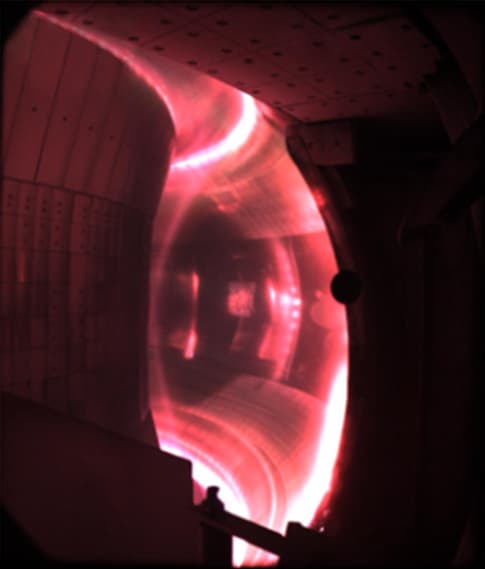Nuclear Fusion

Nuclear fusion is a reaction in which two or more atomic nuclei combine to form a larger nucleus. The difference in mass between the reactants and products is manifested as either the release or absorption of energy. This difference in mass arises as a result of the difference in nuclear binding energy between the atomic nuclei before and after the fusion reaction. Nuclear fusion is the process that powers all active stars, via many reaction pathways.
Q: What world-changing idea, small or big, would you like to see implemented by humanity?
A: This is easy. I would like to see the development of fusion power to give an unlimited supply of clean energy, and a switch to electric cars. Nuclear fusion would become a practical power source and would provide us with an inexhaustible supply of energy, without pollution or global warming.
— Stephen Hawking (Brief Answers to the Big Questions)
ParentsRelated linksCollection links- Chris Wright: nuclear fusion will soon power the world
- (1068) The Final Barrier to (Nearly) Infinite Energy - YouTube
- xkcd: Helium Synthesis
- Nuclear fusion: new record brings dream of clean energy closer - BBC News
- Can German engineering solve the challenges of fusion? - BBC News
- xkcd: Gold
- The Israeli plan to fit a fusion reactor into a container - BBC News
- (117) WE DID NUCLEAR FUSION - YouTube
- Major breakthrough on nuclear fusion energy - BBC News
- NIF: US lab takes further step towards nuclear fusion goal - BBC News
- Nuclear fusion: Five sites shortlisted for UK energy plant - BBC News
- US lab stands on threshold of key nuclear fusion goal - BBC News
- Nuclear energy: Fusion plant backed by Jeff Bezos to be built in UK - BBC N
- Mast Upgrade: UK experiment could sweep aside fusion hurdle - BBC News
- The UK’s quest for affordable fusion by 2040 - BBC Future
- UK fusion experiment used in hunt for clean energy - BBC News
- Iter: World's largest nuclear fusion project begins assembly - BBC News
- Nuclear fusion is 'a question of when, not if' - BBC News
- Nuclear fusion - Wikipedia
ENGLISH COLLECTIONNOVEMBER 18, 2025 AT 09:41:15 UTC